MOSCOW, 1985: BEGINNING OF TRANSITION
The phone rang at 5 a.m. It was 1985; spam calls had not been invented. I picked up the receiver. The caller said he was at the American Embassy in London, is this Leslie Friedman? Yes. He called to find out if I would be willing to travel to Russia to perform. I sat up. Yes. Are you sure you could do this? YES. He asked a few more questions which I do not remember. I interrupted him and said, “Russia is the Mecca of ballet. Of course I want to do it. When do I go?” The caller told me there were other posts that would like to have me come to perform and perhaps to teach. The caller was in charge of planning the presentation of American specialists like engineers and artists. He knew about my 1983-1984 work in India, Sri Lanka, Egypt, and Tunisia from reports sent to him by US diplomats in those places. The caller, Cal,* said that he would get back to me with the details of other posts and travel dates.
Cal called again. Hungary, Romania, and Spain invited me. None” of them had co-sponsored an American artist before this. There had been no cultural exchange with the USSR for 14 years. I would perform for an all-Russian audience of officials and artists. This was completely new. He did not have to tell me, but he did, that Russia, with its great ballet tradition might not know what to make of me, if they came at all.
Long lines of travelers were waiting to show their passports at the Moscow airport when I arrived, March 13. My papers accepted, I heard someone nearby ask if I were Leslie. It was the Cultural Attaché from the Embassy. I was ready to leave the airport, but first my suitcases needed to be searched and then kept for further inspection. My companion asked if I needed anything in the suitcases. Definitely: fluids and a case for contact lenses. Ted* said the Embassy kept supplies on hand; we could go there.
We got the needed items and looked into a ballroom. It was full of people sitting on folding chairs. I remember only men sitting there, looking half or entirely asleep. Their jackets hung over the backs of chairs; their heads rested on their hands draped over the chair in front of them. I asked Ted who they were. He said they were journalists awaiting news of who would be the new leader of the USSR. Chernenko had died a day and a half before. His death and funeral could have called off my program.
Ted said the sleepy writers knew that eventually Secretary of State George Schultz would appear and make the announcement. He asked me if I was ready to go. I asked him if we could stay. “How long do you want to wait?” he asked. “I would like to hear the announcement.” “You mean you’re interested?” “Yes, this is history, and I am here. If we can stay, let’s stay.” We waited. Nothing happened. Then, George Schultz appeared. The room was suddenly alert, chairs filled, jackets back on, all eyes turned toward Secretary Schultz. He said that he had “had a good meeting with Russian leaders. The new person heading their government will be Mikhail Gorbachev. I have met him. He is someone we can work with.” Secretary Schultz smiled. He beamed positive vibes.
Ted said, “Now I can take you to your hotel.” It was very cold outside. Ice and snow were on the sidewalks. Ted escorted me to my room. It was very small. Bunk beds. The window would not close. The shower had only cold water. Ted had said that Paul Newman had stayed in this hotel. I thought, definitely not in this room. I worried about icy muscles before dancing. The next morning, Ted arrived to drive me to the ambassador’s residence, Spaso House. He told me that visiting artists would normally perform at the residence for an American audience. I met the ambassador’s wife. Donna Hartman, a tall, beautiful, blonde lady, told me that I could do my stretches on the floor of their dining room. Mostly, I remember how good the carpet felt. She got down on the floor and did stretches with me. She asked about my hotel room. I told the truth. I said maybe I could move to another room. She invited me to stay there in their home with Ambassador Hartman and herself. I feel my eyes pop as I remember that moment. I slept in the Vice-President’s room in a wonderful, warm bed.
Before the program, I was introduced to Valukin, the artistic director of GITIS. I was scheduled to do a performance and lecture there the next day. GITIS is Russia’s crown jewel of the theater arts, revered for training choreographers, ballet dancers and folk ensembles. Valukin himself had trained there and became a star of the Bolshoi. After my presentation at GITIS, Valukin asked me to return to teach. A First for an American dancer.
Friendship House, a grand, pre-1917 relic, was to be my performance venue. It is the stage for foreign artists. I changed in a small room with a drapery for a door. Ted surprised me by walking in. There was barely room for one person, me, and one person’s stuff, my costumes and notes. Ted had decided there were things I needed to know and a few minutes before my performance was the best time to inform me. He said that one of their great ballerinas, Olga Lepeshinskaya, a Bolshoi star in the 1930s and ’40s, would introduce me, but there was no guarantee that she would show up. The invitees included artists, art administrators, the symphony orchestra, dancers from the Ballet, ballet students, Russian officials. He added that it would be an all-Russian audience; no Americans except the ambassador and Mrs. Hartman. The Russians might not want to come, and they might be told not to come. I told him that this is not what I need to hear at this time. He emphasized that it was important. I told him, “Please leave. Get out of my dressing room.” As I remember this, I feel nervous; his messages were so distracting. At the time, however, I was calm. Especially once he left.
Mme. Lepeshinskaya was onstage introducing me in Russian. It was a moment when everything was in harmony. The dancing went well. When I ended, the audience stood, applauded, even cheered. Mme. Lepeshinskaya praised me in loving comments. She looked into my eyes, held my hand, and told the audience they should follow my example, expanding ballet and expression to bring Russian Ballet into the present. That’s what the translator told me. Praise from a Prima; what a gift.
When I went backstage to the reception room, Valukin picked me up and swirled me around in the air. He was elated. He said I had “done what he had hoped for: showing that a dancer–an American!–could dance beautifully in this new dance.”
Ted accompanied me that night to the Embassy doctor. The unfinished wood floor had left an impression on me. I had many splinters in legs, feet, body. They hurt, but I was too happy to notice the doctor’s needles.
Then, I took the train to Leningrad for performances and meetings with Kirov ballerinas. I stayed in Consul General Charles Magee’s residence. After my Russian program was over, the Consul General told me that my program was so successful it was a significant element in getting a new cultural exchange agreement.
–Leslie Friedman
This article appeared in the Institute for Historical Studies publication, Vol.42, No. 3, Winter 2023. It appears here with permission of the Editor, Maria Sakovich.
*Name changed for publication. ^As Leslie has noted, GITIS, State Institute for Theatre Arts, is Russia’s preeminent training for theatrical arts. Since its founding in 1878 the school has expanded greatly and lived through various changes in name. GITIS is the longest-lived appellation and was incorporated into the 1991 change in status: “Russian Academy of Theater Arts-GITIS.”
Leslie is a modern dancer. “My early training was ballet with Mme. Victoria Cassan, an Englishwoman who was a soloist in Anna Pavlova’s company. Much later, I was offered a scholarship at the Alvin Ailey school and a place in the Martha Graham school’s professional training program. My choreography is musical and expressive. That means that some ballet people think it is modern dance and modern/ contemporary people think it is too balletic.” Editor’s Notes
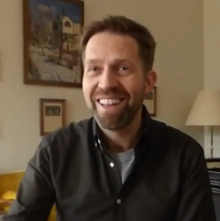
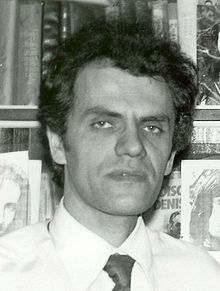 Alexander Vustin, Com
Alexander Vustin, Com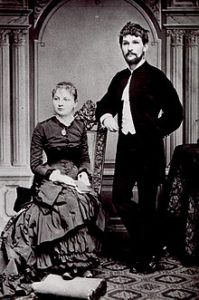 Leos Janacek (1854-1928) with his wife, Zdenka, 1881.
Leos Janacek (1854-1928) with his wife, Zdenka, 1881.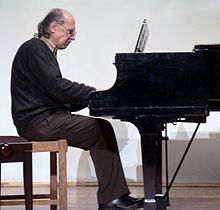 Valentyn Silvestrov, born 1937, Kyi
Valentyn Silvestrov, born 1937, Kyi Lud
Lud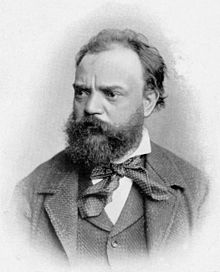 Antonin Dvorak (18411904)
Antonin Dvorak (18411904)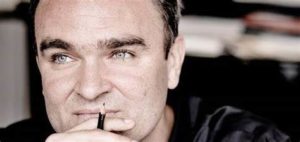
 Gustav Mahler
Gustav Mahler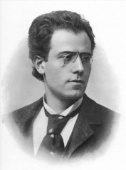
 Yi
Yi